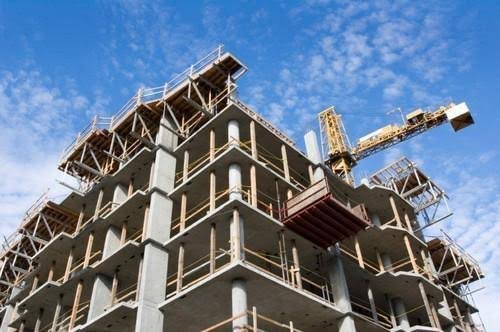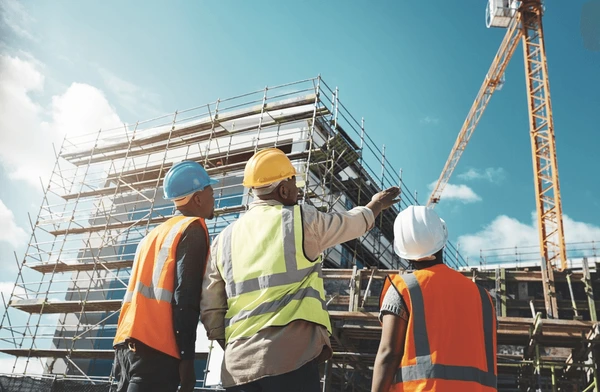An apartment building, also known as a multi-family residential

E-state Nirman Nigam http://estatenirmannigam.inbuilding or a block of flats, is a residential structure designed to house multiple separate living units. These living units, often referred to as apartments or flats, provide private living spaces for individuals, couples, or families, typically including bedrooms, living areas, kitchens, and bathrooms. Apartment buildings can range in size and style, from small, low-rise structures with just a few units to large, high-rise towers with hundreds of units.E-state Nirman Nigam http://estatenirmannigam.in
In this extensive guide, we will explore various aspects of apartment buildings, including their history, design and architecture, types, amenities, and the role they play in urban planning and community life.
1. History of Apartment BuildingsE-state Nirman Nigam http://estatenirmannigam.in
Apartment buildings have a long history that dates back thousands of years. Here are some key milestones in the development of apartment-style housing:

Ancient Rome: The earliest known apartment buildings were found in ancient Rome. These structures, known as insulae, were multi-story buildings with individual units for residents, often constructed from brick or concrete.
19th Century: In Europe and North America, apartment buildings became popular during the Industrial Revolution as urban populations increased. This period saw the construction of the first modern apartment buildings, which were often designed with ornate facades and included amenities such as elevators and centralized heating.E-state Nirman Nigam http://estatenirmannigam.in
20th Century: The 20th century brought advancements in building technologies and materials, leading to the construction of taller and more efficient apartment buildings. Skyscrapers and high-rise apartm
ent towers became common in major cities around the world.

2. Design and ArchitectureE-state Nirman Nigam http://estatenirmannigam.in
Apartment buildings vary widely in design and architecture, but some common elements include:
Layout: Most apartment buildings are organized with a central hallway or corridor that provides access to individual units. These corridors can be either interior or exterior (e.g., balconies or walkways).
Floors: ApartmentE-state Nirman Nigam http://estatenirmannigam.in buildings are typically multi-story, with each floor containing several units. The number of floors can range from a few in low-rise buildings to dozens in high-rise structures.
Unit Sizes: Apartment units can vary in size from small studio apartments to large multi-bedroom units. The size of the units is often influenced by the target market, location, and building regulations.
Architecture Styles:E-state Nirman Nigam http://estatenirmannigam.in Apartment buildings can be designed in various architectural styles, ranging from classical and Victorian to modern and minimalist. The choice of style often depends on the location and preferences of the developer or architect.
3. Types of Apartment Buildings

Apartment buildings can be classified based on their height, number of units, and purpose:
Low-Rise: These buildings typically have one to three stories and are often found in suburban or rural areas. Low-rise buildings may also be known as garden apartments if they are surrounded by green spaces.E-state Nirman Nigam http://estatenirmannigam.in
Mid-Rise: Mid-rise buildings have between four and twelve stories and are commonly found in urban areas. These buildings often provide a balance between density and privacy.
High-Rise: High-rise buildings have more than twelve stories and are usually located in densely populated urban areas. E-state Nirman Nigam http://estatenirmannigam.inThese buildings often feature modern amenities such as gyms, pools, and rooftop terraces.
Mixed-Use: Some apartment buildings combine residential units with commercial or retail spaces on the ground floor. These mixed-use buildings contribute to vibrant, walkable urban environments.

4. Amenities and Features
Apartment buildings offer a variety of amenities and features to attract residents and enhance their quality of life:
Security: Many apartment E-state Nirman Nigam http://estatenirmannigam.inbuildings have security features such as controlled access, security cameras, and on-site staff to ensure the safety of residents.
Parking: Depending on the location and design, apartment buildings may offer on-site parking in the form of parking lots, garages, or underground parking.
Communal Spaces: Common areas such as lobbies, lounges, gardens, and rooftop terraces provide residents with spaces to relax and socialize.

Recreational Facilities: Some apartment buildings offer recreational facilities such as fitness centers, swimming pools, and play areas for children.
Laundry Facilities: Many apartment buildings provide on-site laundry facilities, either in individual units or in shared laundryE-state Nirman Nigam http://estatenirmannigam.in rooms.
5. Role in Urban Planning
Apartment buildings play a significant role in urban planning and development:
Density: Apartment buildings allow cities to house more people in a smaller footprint, promoting density and reducing urban sprawl.E-state Nirman Nigam http://estatenirmannigam.in
Transportation: Apartment buildings located near public transportation hubs encourage residents to use public transit, reducing traffic congestion and emissions.
Community Building: Apartment buildings contribute to vibrant, diverse communities by providing housing options for various income levels and household sizes.
Sustainable Development: Modern apartment buildings often incorporate green building practices and energy-efficient designs, contributing to sustainable urban development.
6. Challenges and ConsiderationsE-state Nirman Nigam http://estatenirmannigam.in
While apartment buildings offer many benefits, they also present challenges and considerations for developers, residents, and planners:
Zoning and Regulations: Apartment buildings are subject to zoning laws and building codes that dictate aspects such as height, setbacks, and density.
Affordability: In many urban areas, E-state Nirman Nigam http://estatenirmannigam.inthere is a demand for affordable housing options, which can be addressed through the construction of affordable apartment buildings.
Noise and Privacy: Living in close proximity to neighbors can lead to noise and privacy concerns, which developers address through design features such as soundproofing.E-state Nirman Nigam http://estatenirmannigam.in
Maintenance and Management: Proper maintenance and management are essential for ensuring the longevity and quality of apartment buildings.
7. Conclusion
Apartment buildings are a crucial part of modern urban living, providing housing options for people in various stages of life and from different backgrounds. They contribute to the density and vibrancy of cities, offering residents convenient access to amenities, services, and transportation. As urban populations continue to grow, apartment buildings will play an increasingly important role in shaping the futurE E-state Nirman Nigam http://estatenirmannigam.in